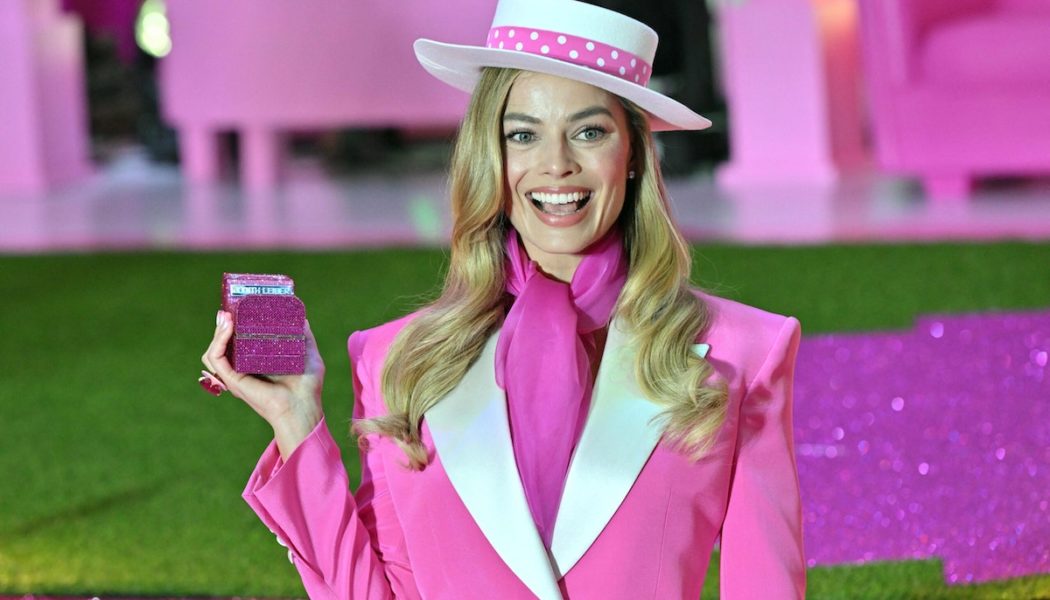
The ideological roots of feminism are at least 200 years old, but somehow, as a movement, it has been able to rebrand itself anew every few generations to maintain relevance.
The essentials to the feminist movement – free love, the occult, and smashing the patriarchy – were first brought together as the “women’s revolution” by poet Percy Shelley. I discovered this when researching my forthcoming book, “The End of Woman: How Smashing the Patriarchy Has Destroyed Us” (Regnery, August 2023). Inspired by the mother-in-law he never met, Mary Wollstonecraft, Shelley took her ideas and added them to his own version of what female freedom should look like. While his wife was writing “Frankenstein,” Shelley created his own creature: the character of Cythna, who was the first independent woman, disconnected from her parents, husband, and children. Curiously, the only relationship she had was with Satan. Cythna became a beacon for budding feminists in the 1800s and beyond.
Elizabeth Cady Stanton is perhaps the best-known 19th century feminist influenced by Shelley as she fought for women’s suffrage. The movement took significant turns in the 1900s, first with the triumph of the suffrage movement after the end of World War I. Thereafter, it was adrift without a cohesive goal, but eventually mingled with the communist party in the ’30s, ’40s, up till the second wave of the 1960s. The ’60s and ’70s ushered in a much more pronounced feminist movement that gave us the new independent woman through a toxic blend of TV, the New Left, and the ubiquitous visuals featuring sexy and stylish women, but all the while, the original model remained: a blend of free love, occult, and smashing the patriarchy.
Later waves haven’t quite had the splash of the second wave and as those second wavers have aged, the movement has become a bit frayed at the edges. While some are in their 60s, like Oprah Winfrey, Whoppi Goldberg, and Madonna, most of the mavens are now 70+ years of age, such as Hillary Clinton, Nancy Pelosi, Elizabeth Warren, Joy Behar, Anna Wintour, and Dianne Feinstein. Its embrace of the LGBTQ has also brought in a cast of characters that give feminism the look of a party scene from “Trolls.” The aged and awkward have taken the sheen off the movement, especially among the normals of Gen X and Gen Z.
But now, “Barbie” comes to the rescue. Barbie is young, beautiful, bubbly, and has the benefit of nostalgia for most American women. With this movie, Barbie takes on yet another new frontier – saving feminism from its tired old self.
(Warning: spoiler alerts to come.) The film starts with Barbie living her perfect life every day when suddenly she is plagued by thoughts of death, her feet flatten, and cellulite shows up. To find her way out of this terrible plight, she must visit Weird Barbie, an old and odd sage, who kinda reminds us of some current feminists we know. Weird Barbie, like the star Barbie, also used to be Stereotypical Barbie, instead of one of the many offshoots, like President Barbie and Mermaid Barbie. Weird Barbie lost her dazzle through mistreatment and was left with a bad haircut, graffiti make-up, and messed up clothes. The movie unfolds as Barbie takes Weird Barbie’s advice to get back to her previously perfect self. Barbie’s adventure starts as she leaves in her pink car with “Closer to Fine” playing by the Indigo Girls, the ’80s and ’90s Lesbian folk duo, a nostalgic nod to all Gen Xers.
Feminism dogma doesn’t take long to surface. In word and deed, there are plenty of reminders that the patriarchy always needs smashing. The film features men who are buffoons, clueless, vulgarians, narcissists, and arrogant. Not one is really necessary for daily life. They are the bicycle a fish needs, to quote Gloria Steinem, “Women need men like a fish needs a bicycle.”
“Barbie” also reminds us, heavy-handedly, that women’s relationships and leadership are indispensable for a perfectly peaceful world. If only women could truly subdue men, then all things would be pacific and calm.
Once feminism virtues are served, it is time to remind women just how hard it is to be women.
The two main human females in the film are a mother and daughter, Gloria, and, her tween daughter, Sasha, who are struggling to understand each other. The adventure of saving Barbie sets the two on a restorative quest. But while it is happening, Gloria rouses Barbie who, almost comatose with despair, thought she may never be perfect Barbie again. Gloria issues an epic rant (edited here to half its length) about womanhood in a way that surprises even herself:
You have to be thin, but not too thin. And you can never say you want to be thin. You have to say you want to be healthy, but also you have to be thin. You have to have money, but you can’t ask for money because that’s crass. You have to be a boss, but you can’t be mean. You have to lead, but you can’t squash other people’s ideas… You have to never get old, never be rude, never show off, never be selfish, never fall down, never fail, never show fear, never get out of line. It’s too hard! It’s too contradictory and nobody gives you a medal or says thank you! And it turns out in fact that not only are you doing everything wrong, but also everything is your fault.
This rant magically wakes up not just Barbie, but any Barbie who has fallen under the spell of the patriarchy. It is also meant to wake up those of us in the pews, er, the theatre seats. Life as a woman is hard and feminism is here to help us. Once again, if we can just tune out all the men, things get easier quickly.
Perhaps the most disturbing, but iconic scene of the film is the opening, creating a new myth to explain Barbie’s power. Before her arrival, little girls dressed in beige and beleaguered, play with baby dolls. Oh, the drudgery! Not to worry, Barbie’s type of feminism allowed these little girls, just like their mothers, to smash in the skulls of their babies and move on to much more exciting and interesting careers away from children. Later in the film, Midge, the name for Pregnant Barbie, gets a few cameos but we are quickly reminded that Pregnant Barbie was discontinued. No one wants Pregnant Barbie.
Some have argued that Barbie overstates the feminist case so much that truly no one could believe it, undermining its own message. Having researched feminism now for several years, this kind of hyperbole is not unique. Gloria Steinem, who might be the muse behind Kamala Harris’s wisdom, has said things like: “The future depends entirely on what each of us does every day; a movement is only people moving,” “Like art, revolutions come from combining what exists into what has never existed before,” or this gem, “Until the masculine role is humanized, women will tend to be much better at solving dangerous conflicts.”
Sadly, the level of ridiculousness is not new, it is just new to a general audience. I’ll admit it looks a lot better in pink, but hopefully, someday, a generation of women will finally wise up and realize that all this is still just the vision of a creepy and decadent English poet, and like Frankenstein’s creature created by his wife Mary Shelley, isn’t really real. It is, after all, just a Barbie World.
Carrie Gress Ph.D. (philosophy) is a fellow at the Ethics and Public Policy Center and the founder and co-editor of the online women’s magazine Theology of Home. She is the author of The End of Woman: How Smashing the Patriarchy Has Destroyed Us (Regnery Publishing, August 2023), now available for Pre-Order.
The views expressed in this piece are those of the author and do not necessarily represent those of The Daily Wire.
CLICK HERE TO GET THE DAILY WIRE APP



![“The first thing you can always do is thank God” [must-watch video]…](https://salvationprosperity.net/wp-content/uploads/2022/01/the-first-thing-you-can-always-do-is-thank-god-must-watch-video-327x219.jpg)





